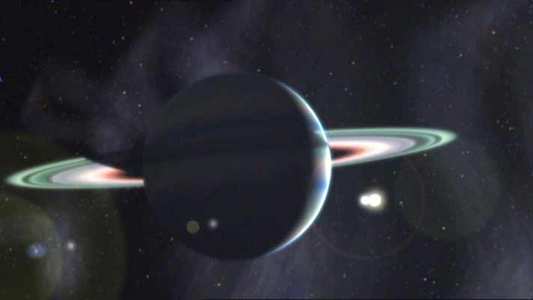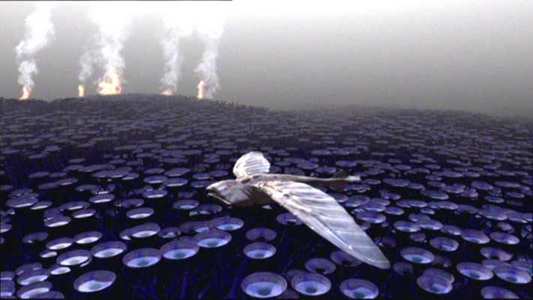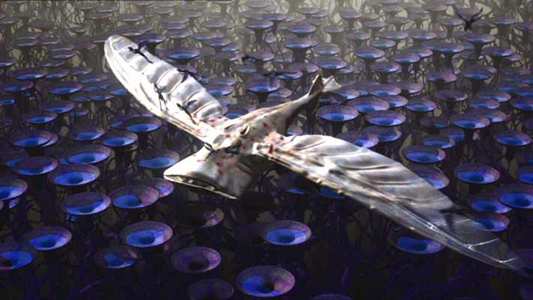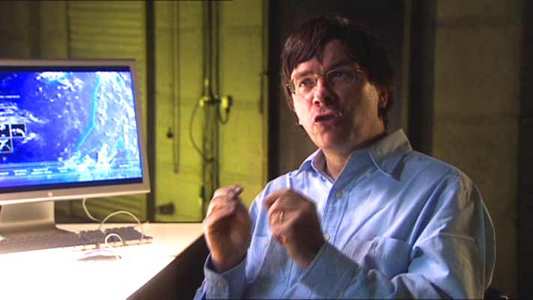Review of Alien Worlds
Introduction
I guess it`s a unifying truth that we`re all intrigued about `life out there`. With literally billions of potentially habitable planets in the cosmos it`s almost arrogance to assume that we, a pinprick in the cosmos, could be the only life out there. In fact, hardened scientists also take this view. It`s not a question of `if` but a question of `when`. And then, I guess, a question of `what`.
`Alien Worlds` tries to scratch that philosophical itch by portraying some entirely feasible possibilities, and it makes for some pretty compelling viewing.
It originally aired earlier this month (October 2005) as a Channel 4 two-hour CGI science special and was a collaboration with London`s Science Museum who will be hosting a series of related events throughout October and the coming months (the `Science of Aliens` exhibition).
You get the sense that, despite this being an informative science-based piece, that it`s being marketed widely - reflecting the universal appeal of its subject matter.
It claims to bring together the world`s leading astronomers, astrophysicists and astro-biolgoists to predict what life forms might exist on other planets. Although the results seem every bit as fantastic as science fiction, they are based on hard, empirical fact-based evidence. Which may account for why most the creatures described are no more `incredible` (with one or two exceptions) than creatures on our own planet.
The programmes certainly came from a good pedigree (from the producers of Body snatchers, Orang-utan Rescue and Bug Attack) and the production value here reflects some serious investment. It`s packed wall-to-wall with a mixture of CGI (think `Future Sound of London` album covers) and sophisticated model making and puppeteering. Even the interviews and presentation to camera is shot in a lavishly dressed `studio` (actually a disused MOD building).
The programme has an original score (which in truth becomes a little repetitive) and more spot effects per square-inch than any programme I have ever seen. (Or should I say `heard` - listen to those crunching and squelching sound effects. Ugh!).
Produced and Directed by Nick Stringer (you`ll get to meet him in the Extra Features) and presented by trendily-bald Dr. Arman Lero, the concept was to gather a tribe of experts, and over two years (experts work slowly), to transform their vision of what life could be like on other planets. The results are the creation of two planets - Aurelia and Blue Moon, both of which the scientists believe are feasible and full of life based on the likely temperatures, atmosphere, and general conditions.
As Dr. Lero states, "It`s their extraordinary visions that have been brought to life…"
AURELIA
This starts with a pretty mind-blowing proposition. "Our own galaxy would take 100,000 light years to reach the end of. That`s big. But there are a hundred billion more galaxies like it in the universe. We only know of one planet that has life. Earth."
`Aurelia` is described as `…a living, breathing world`. It`s a world in perpetual light on one side, and perpetual darkness on the other, relying on a nearby Red Dwarf for light and heat.
We see that it`s a world populated by hybrid plant-mammals that stretch out to catch as much light as they can. They also have the ability to move so that they are able to jostle for the best positions.
Naturally the planet is host to a wide variety of other creatures, the most notable being large bird-like creatures with huge-spiky beaks that will help them pull other creatures (like the cute little six-legged mudpods) from their burrows.
There are also creatures that are almost `virtual` (it`s life Jim but not as we know it) like killer hysteria and the creeping stinger fans.
This is all presented like a factual natural history programme which really draws you in, making this all the more believable. You really begin to feel that you are visiting an Alien World.
BLUE MOON
The Blue Moon has a much more dense atmosphere where humans could never hope to live. Here you`ll see pagoda-plants that float above the sea like giant kites, their `strings` sucking up nutrients from the seabed. There are giant flying sky whales, and three-eyed stalkers who have 360 degree vision, all the better to see those giant sky-whales (Huh?) which we see brutally attacked in an untypical moment of high violence. And all this less than 50 light years away? I think I`ll pull those curtains…

Video
With digitally created CGI and beatifully shot interiors this is a flawless print.

Audio
Though the score gets a little tiresome, this has more than its fair share of spot fx that really bring the animation to life. You`ll be hearing a whole range of litlle crunches, squelches and groans coming from those rear speakers!

Features
There`s a very reasonable `making-of` documentary here which is neatly divided into self-descriptive chapters.
Chapter 1: Genesis - no, not a quick burst of `Suppers Ready`, but a quick overview of how the programme came together from conception to production. Ten scientists were involved, all experts in their field (Astronomers, Astro-biologists etc) with `Big Wave` Director Nick Stringer drawing the team together.
Chapter 2: Dreaming up Aliens - having decided on the planets the next task was to create the Aliens. Here everyone got to play God…
Chapter 3: Modelling the Life forms - here we see some 30 animators working with model-makers to bring it all to life. This was really very informative for anyone interested in model making, CGI or both.
Chapter 4 - Alien Landscapes - both 3D and studio versions of the probable landscapes are discussed.
Chapter 5: Aliens in motion - more CGI explained. (Check out the guys `Thunderbirds` shirt - cool!)
Chapter 6: Planetary Investigation Lab - just the dressing of the MOD space to film the various experts in. It`s strange how `experts` are happy to go along with this side of things which is all about making them look like they all work aboard the Starship Enterprise.
There`s also the trailer and some DVD-Rom features - including some creature profiles etc. Sadly I couldn`t access these on my PC from the review copy but I`m guessing these are text-based pieces.

Conclusion
`Alien Worlds` plays on our natural interest in the bigger picture. With so many billions of other planets out there then surely there must be life?
So does it deliver? Well, yes and no.
It certainly delivers in terms of production value. Make no mistake; this is a class-production with some great CGI and a very developed soundtrack.
It also delivers in terms of its brief. To gather together 10 top experts in their field to create two planets that could easily exist, to analyse the probable conditions on that planet, and then to populate the planet with the sort of life that be likely to have developed, using Darwinism as a foot-hold.
For me though it was both exciting and disappointing in turn. The CGI was very good, but had a kind of `computer game` look to it, which is not to denigrate it, but rather to suggest that we`ve become a little accustomed to these imagined worlds over the years via the imagination of games-makers.
The descriptions of the creatures were very detailed, though terribly biological. Very little was discussed about their state of mind. What were they thinking? What was their purpose? Why are we here?
Then again - that`s a lot to expect for fifteen quid.
Your Opinions and Comments
Be the first to post a comment!